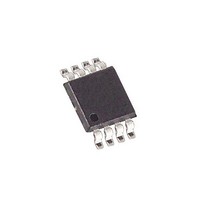MAX4000EUA+ Maxim Integrated Products, MAX4000EUA+ Datasheet - Page 14

MAX4000EUA+
Manufacturer Part Number
MAX4000EUA+
Description
RF Detector IC CNTRLR RF-DETECT F-Detecting Controll
Manufacturer
Maxim Integrated Products
Datasheet
1.MAX4002EUA.pdf
(19 pages)
Specifications of MAX4000EUA+
Lead Free Status / RoHS Status
Lead free / RoHS Compliant
2.5GHz 45dB RF-Detecting Controllers
and does not require external AC-coupling. Achieve
50Ω input matching by connecting a 50Ω resistor
between RFIN and ground. See the Typical Operating
Characteristics section for a plot of Input Impedance vs.
Frequency. See the Additional Input Coupling section
for other coupling methods.
The MAX4000/MAX4001/MAX4002 log amps function
as both the detector and controller in power-control
loops. Use a directional coupler to couple a portion of
the PA’s output power to the log amp’s RF input. In
applications requiring dual-mode operation where there
are two PAs and two directional couplers, passively
combine the outputs of the directional couplers before
applying to the log amp. Apply a set-point voltage to
SET from a controlling source (usually a DAC). OUT,
which drives the automatic gain-control pin of the PA,
corrects any inequality between the RF input level and
the corresponding set-point level. This is valid assum-
ing the gain control of the variable gain element is posi-
tive, such that increasing OUT voltage increases gain.
OUT voltage can range from 150mV to within 250mV of
the supply rail while sourcing 10mA. Use a suitable
load resistor between OUT and GND for PA control
inputs that source current. The Typical Operating
Characteristics section has a plot of the sourcing capa-
bilities and output swing of OUT.
The MAX4000/MAX4001/MAX4002 can be placed in
shutdown by pulling SHDN to ground. SHDN reduces
supply current to typically 13µA. A graph of SHDN
Response is included in the Typical Operating
Characteristics section. Connect SHDN and V
together for continuous on-operation.
Expressing power in dBm, decibels above 1mW, is the
most common convention in RF systems. Log amp
input levels specified in terms of power are a result of
following common convention. Note that input power
does not refer to power, but rather to input voltage rela-
tive to a 50Ω impedance. Use of dBV, decibels with
respect to a 1V
result. The dBV convention has its own pitfalls in that
log amp response is also dependent on waveform. A
complex input such as CDMA does not have the exact
same output response as the sinusoidal signal. The
MAX4000/MAX4001/MAX4002 performance specifica-
tions are in both dBV and dBm, with equivalent dBm
levels for a 50Ω environment. To convert dBV values
into dBm in a 50Ω network, add 13dB.
14
______________________________________________________________________________________
RMS
sine wave, yields a less ambiguous
SHDN and Power-On
Power Convention
CC
In general, the choice of filter capacitor only partially
determines the time-domain response of a PA control
loop. However, some simple conventions can be
applied to affect transient response. A large filter
capacitor, C
the loop bandwidth remains a factor of the PA gain-
control range. The bandwidth is maximized at power
outputs near the center of the PA’s range, and mini-
mized at the low and high power levels, where the
slope of the gain-control curve is lowest.
A smaller valued C
width inversely proportional to the capacitor value.
Inherent phase lag in the PA’s control path, usually
caused by parasitics at the OUT pin, ultimately results
in the addition of complex poles in the AC loop equa-
tion. To avoid this secondary effect, experimentally
determine the lowest usable C
of interest. This requires full consideration to the intrica-
cies of the PA control function. The worst-case condi-
tion, where the PA output is smallest (gain function is
steepest), should be used because the PA control
function is typically nonlinear. An additional zero can
be added to improve loop dynamics by placing a resis-
tor in series with C
phase response for different C
There are three common methods for input coupling:
broadband resistive, narrowband reactive, and series
attenuation. A broadband resistive match is implemented
by connecting a resistor to ground at RFIN as shown in
Figure 4a. A 50Ω resistor (use other values for different
input impedances) in this configuration in parallel with the
input impedance of the MAX4000 presents an input
Figure 3. Gain and Phase vs. Frequency Graph
Filter Capacitor and Transient Response
-100
-20
-40
-60
-80
80
60
40
20
0
F
10
, dominates time-domain response, but
GAIN
C
GAIN AND PHASE vs. FREQUENCY
F
= 200pF
100
C
F
F
= 2000pF
F
results in an increased loop band-
. See Figure 3 for the gain and
1k
Additional Input Coupling
FREQUENCY (Hz)
10k
C
F
100k
= 2000pF
F
F
values.
for the power amplifier
1M
PHASE
C
F
MAX4000 fig03
= 200pF
10M
100M
180
135
90
45
0
-45
-90
-135
-180
-225










